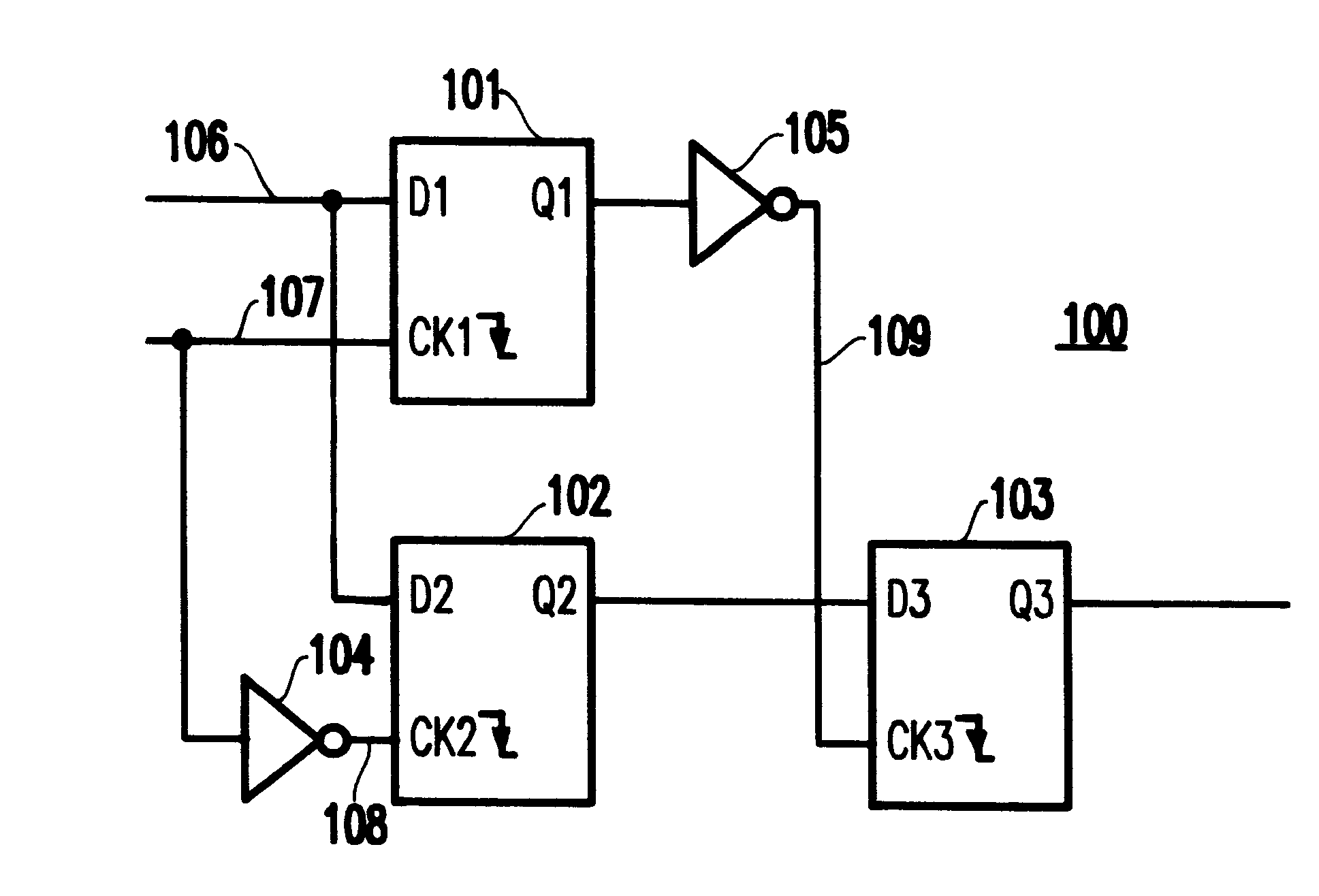Binary self-correcting phase detector for clock and data recovery
a phase detector and clock technology, applied in the field of data transmission and communication systems, can solve the problems of limiting the link to work only at a single data rate, high q bandpass filter cost, and clock signal is necessary to retime or regenerate the received data,
- Summary
- Abstract
- Description
- Claims
- Application Information
AI Technical Summary
Benefits of technology
Problems solved by technology
Method used
Image
Examples
first embodiment
Referring to FIGS. 1-2B, a first embodiment of the present invention will be described below.
FIG. 1 illustrates the structure of a phase detector 100 according to the first embodiment of the present invention. The phase detector 100 includes a plurality (e.g., preferably three) of falling edge-triggered flip-flops 101, 102 and 103.
A random data stream 106 is received in the data input D1 of flip-flop 101 and in the data input D2 of flip-flop 102. It is noted that the invention is optimized with a Non-Return-to-Zero (NRZ) data stream in which the bit period is matched to the frequency of the clock.
The phase detector 100 also includes an inverter 104 for receiving a clock signal 107 from a clock generator (not illustrated) to produce an inverted phase clock signal 108. The clock signal 107 and the inverted phase clock signal 108 are applied to the clock input CK1 of flip-flop 101 and to the clock input CK2 of flip-flop 102, respectively, thereby causing the: received data signal 106 t...
second embodiment
Referring to FIG. 3, a second embodiment of the invention will be described below.
FIG. 3 illustrates a phase detector 200 according to the second embodiment of the present invention using differential logic. The phase detector 200 comprises a plurality (e.g., preferably only three; but additional ones could be added, to reduce metastability, at the stage of receiving the incoming data stream) of edge-triggered flip-flops 201, 202 and 203, each one preferably having differential data and clock inputs and differential outputs.
A NRZ random data stream 204 and its complementary signal 205 are received respectively, in the complementary data inputs D1 and D1B of flip-flop 201. Complementary data signals 204 and 205 are also received, respectively, in the complementary data inputs D2 and D2B of flip-flop 202.
The clock signal 206 and its complementary signal 207 are applied, respectively, to the complementary clock inputs CK1 and CK1B of flip-flop 201. Complementary clock signals 206 and 2...
PUM
 Login to View More
Login to View More Abstract
Description
Claims
Application Information
 Login to View More
Login to View More - R&D
- Intellectual Property
- Life Sciences
- Materials
- Tech Scout
- Unparalleled Data Quality
- Higher Quality Content
- 60% Fewer Hallucinations
Browse by: Latest US Patents, China's latest patents, Technical Efficacy Thesaurus, Application Domain, Technology Topic, Popular Technical Reports.
© 2025 PatSnap. All rights reserved.Legal|Privacy policy|Modern Slavery Act Transparency Statement|Sitemap|About US| Contact US: help@patsnap.com



